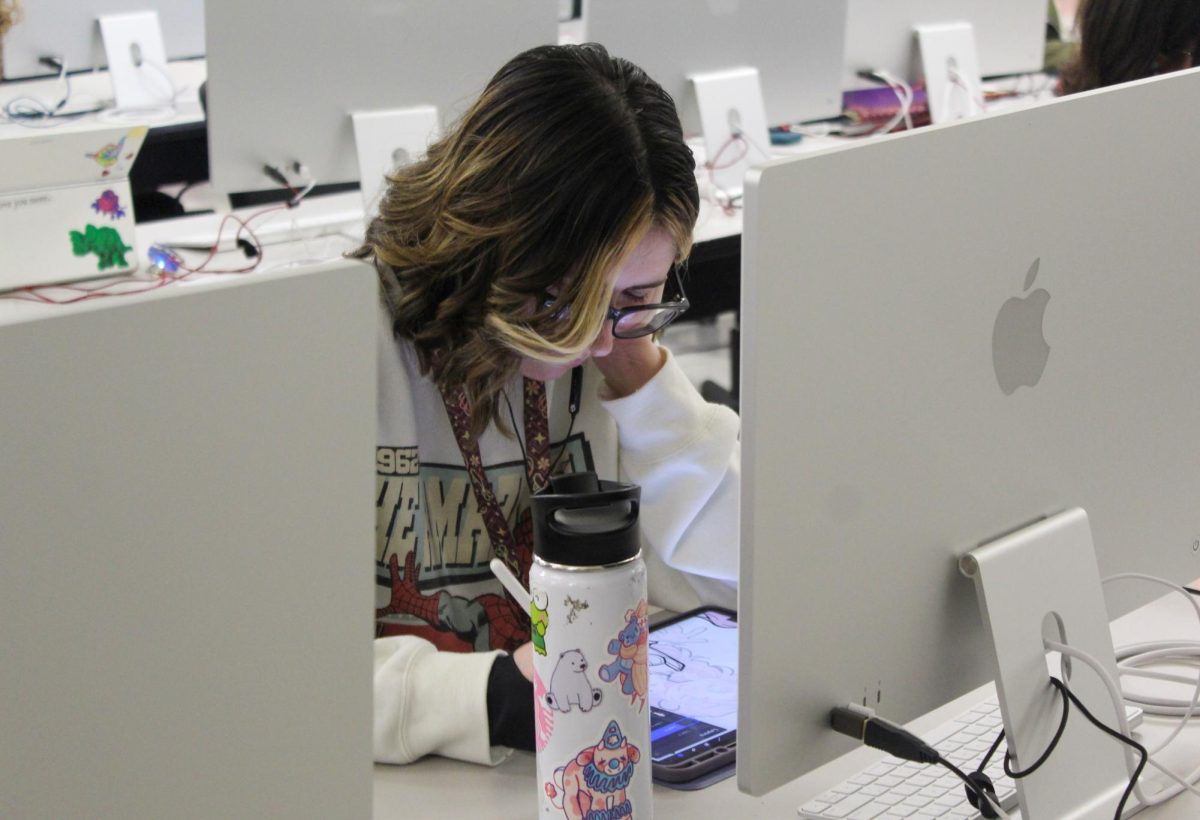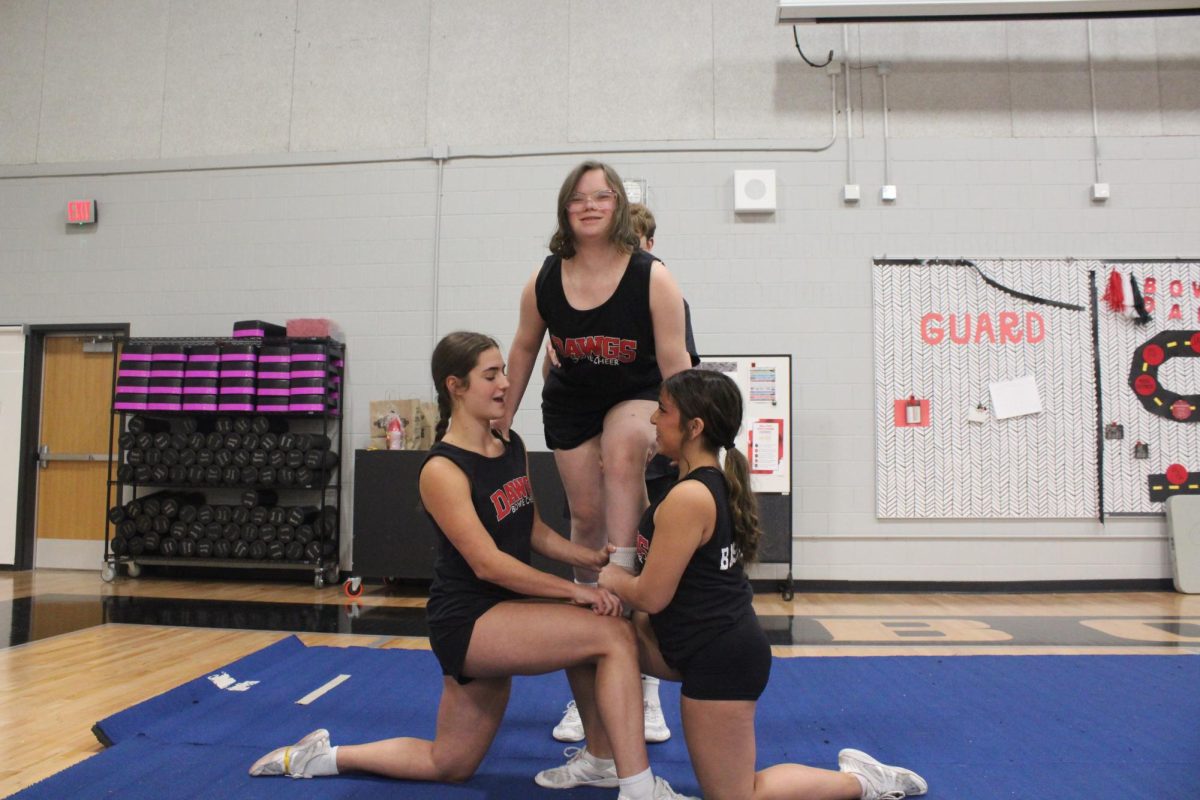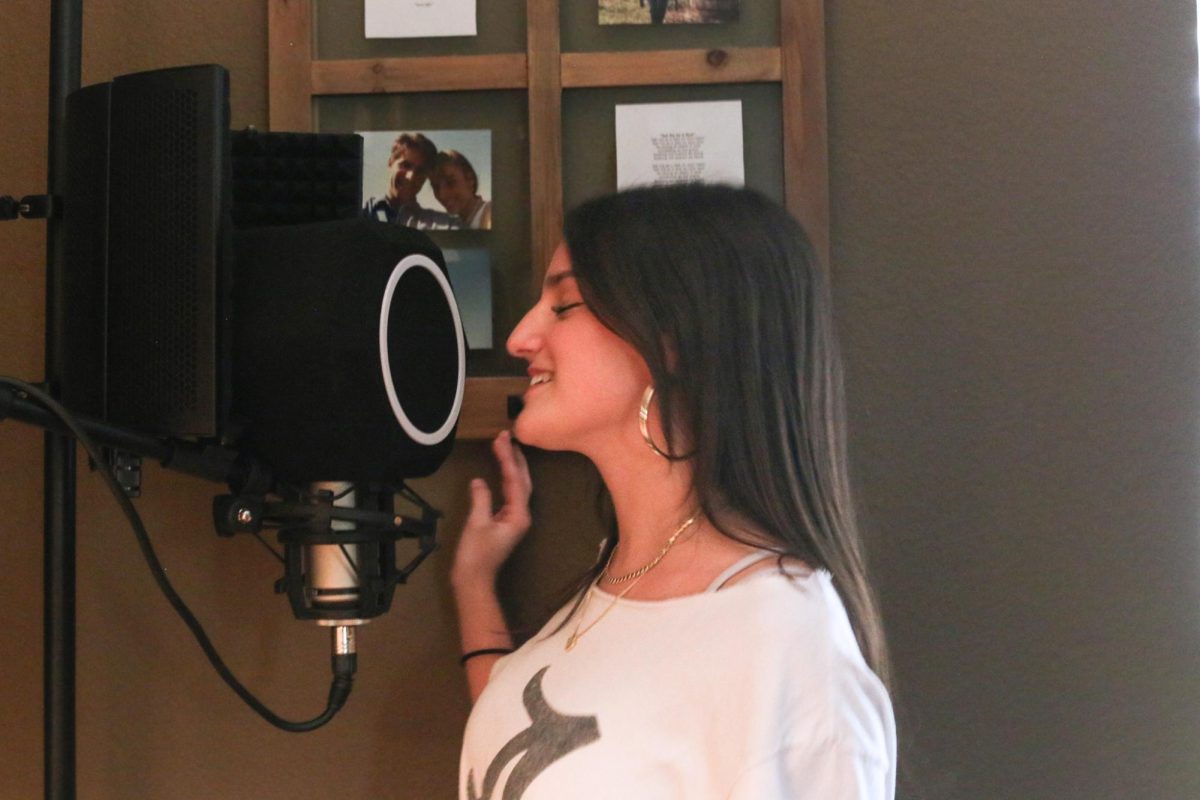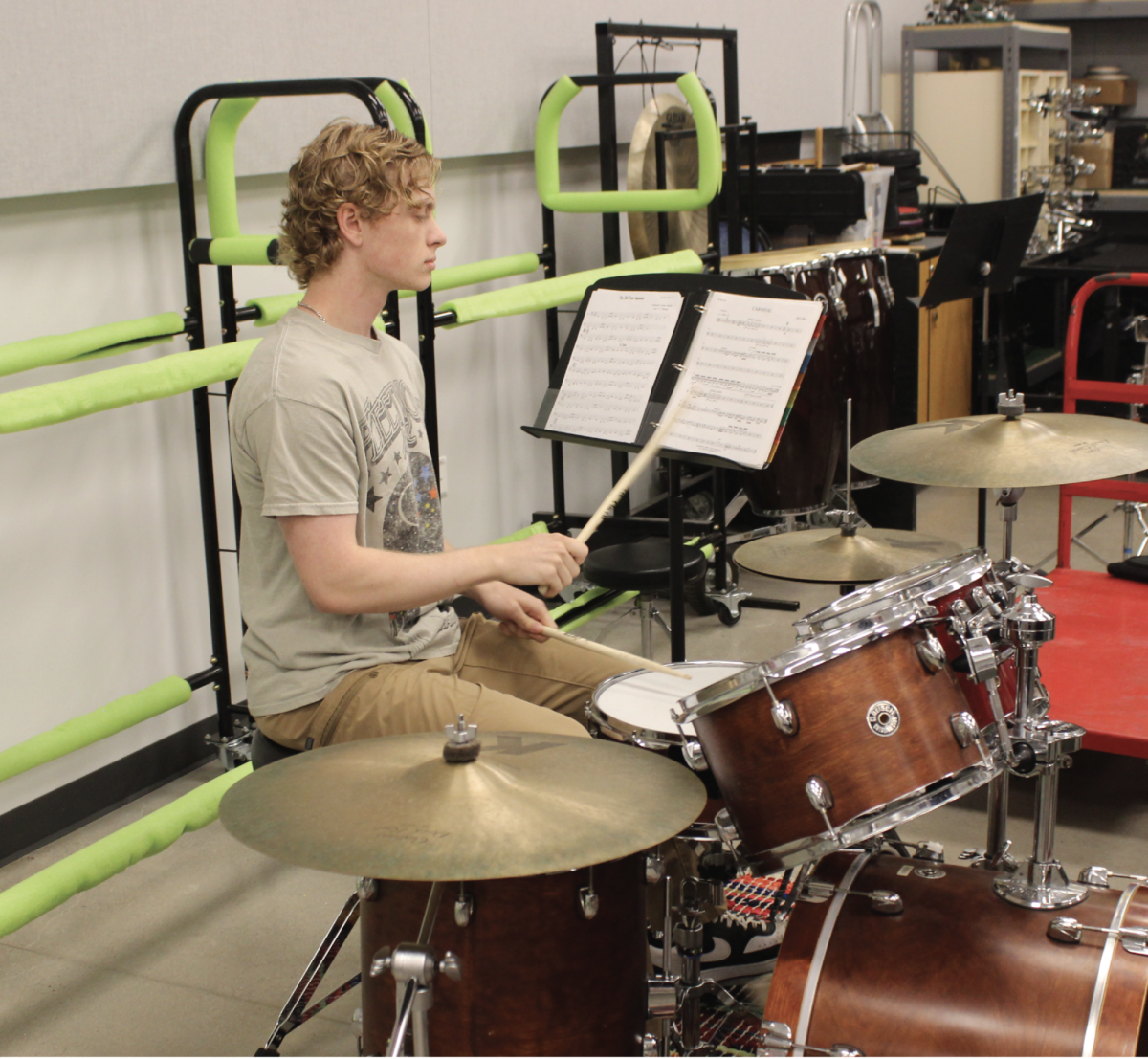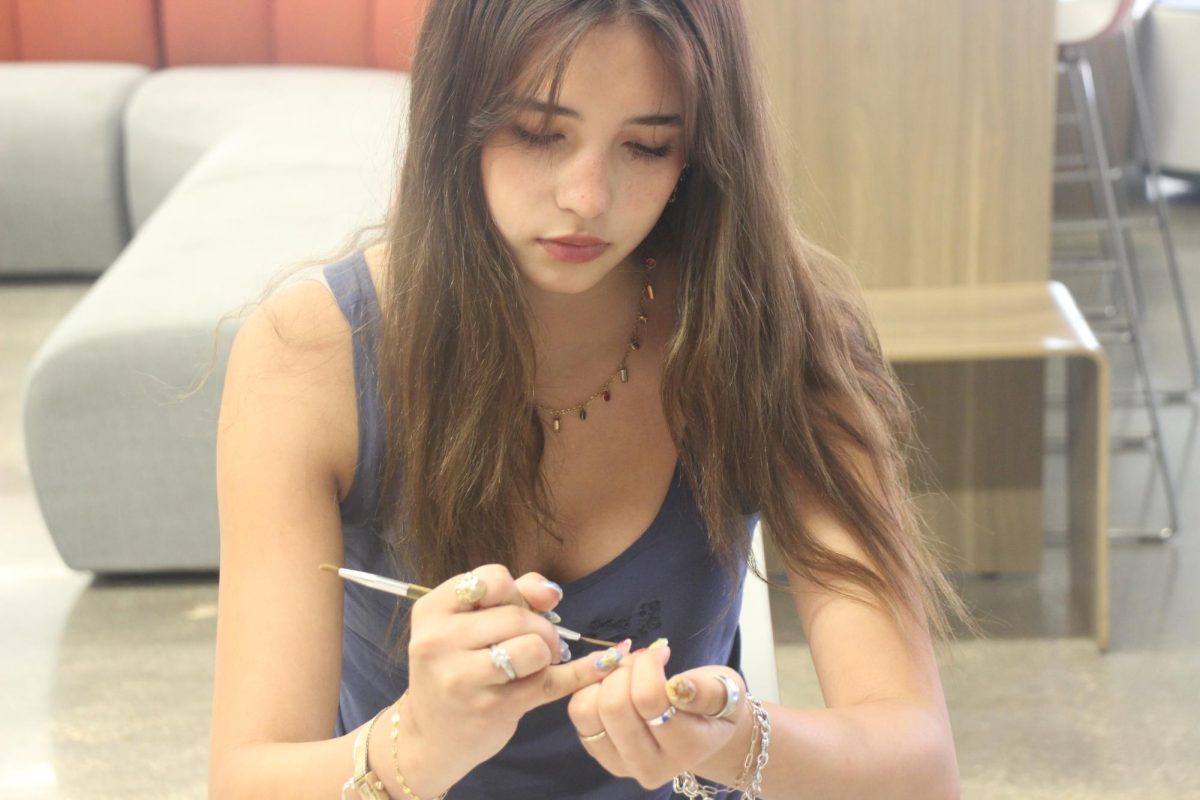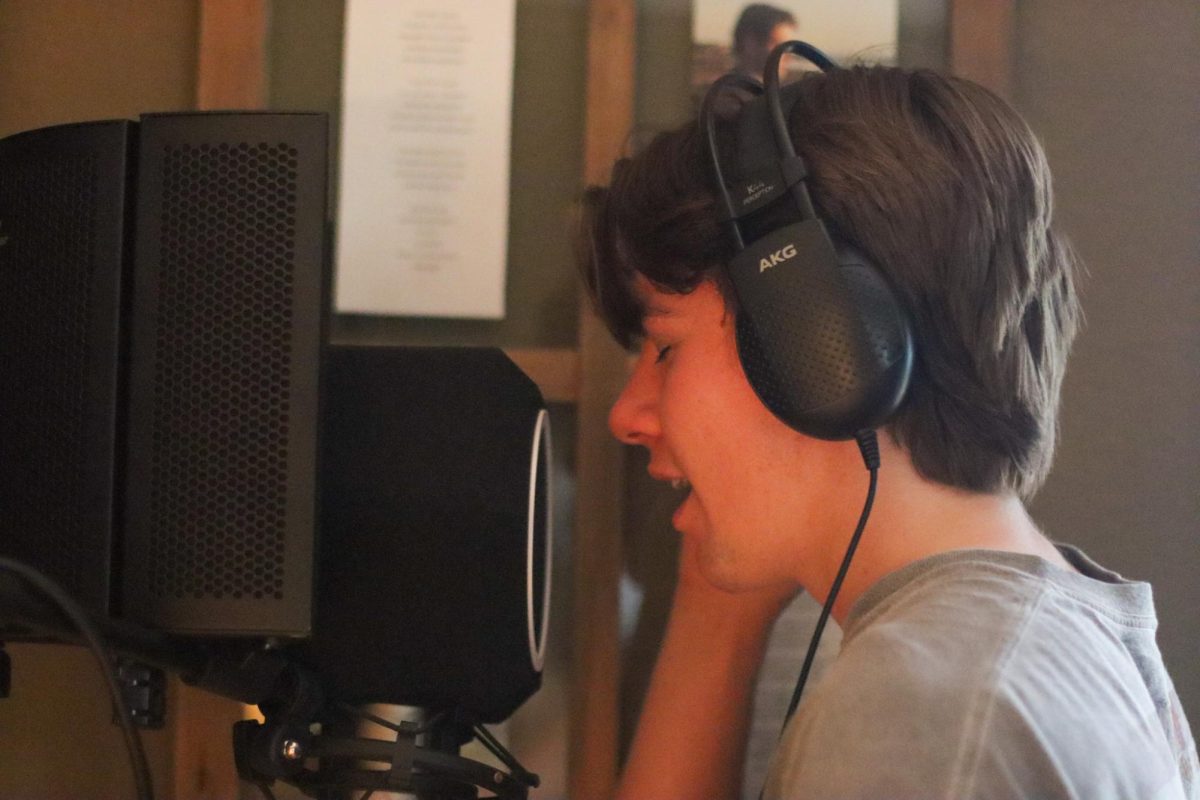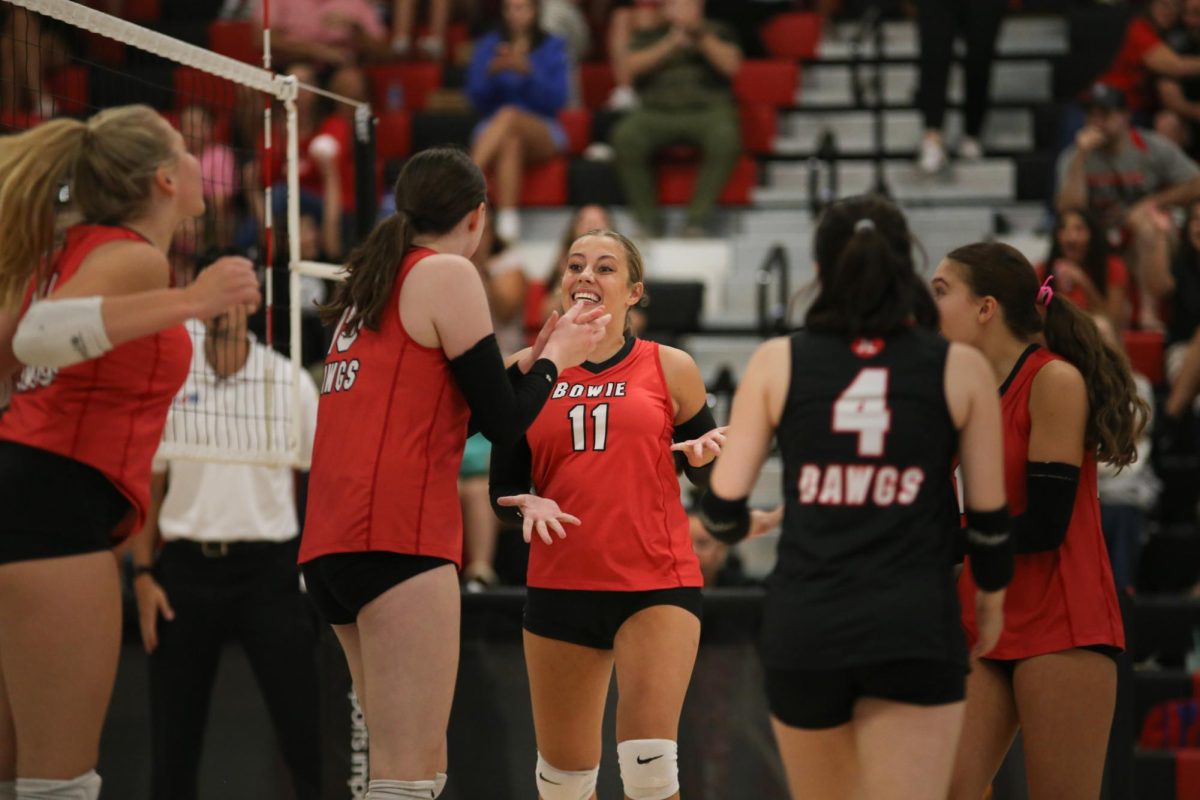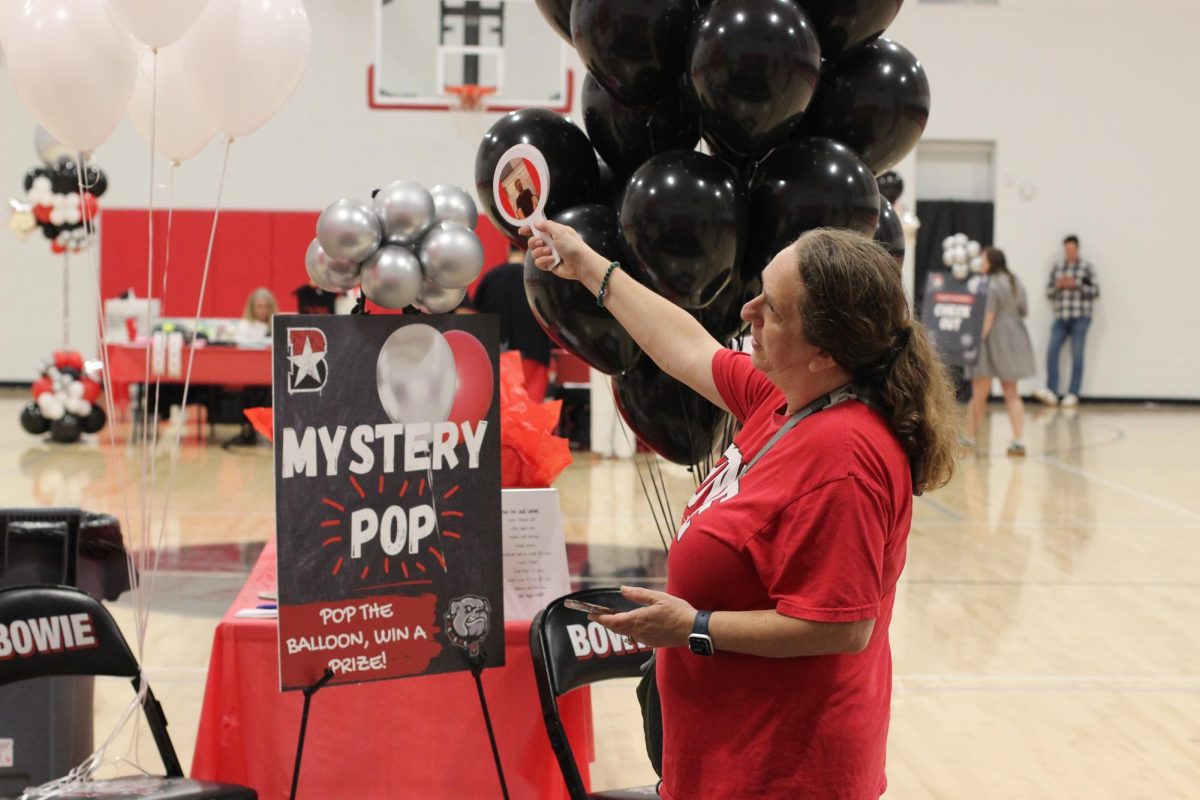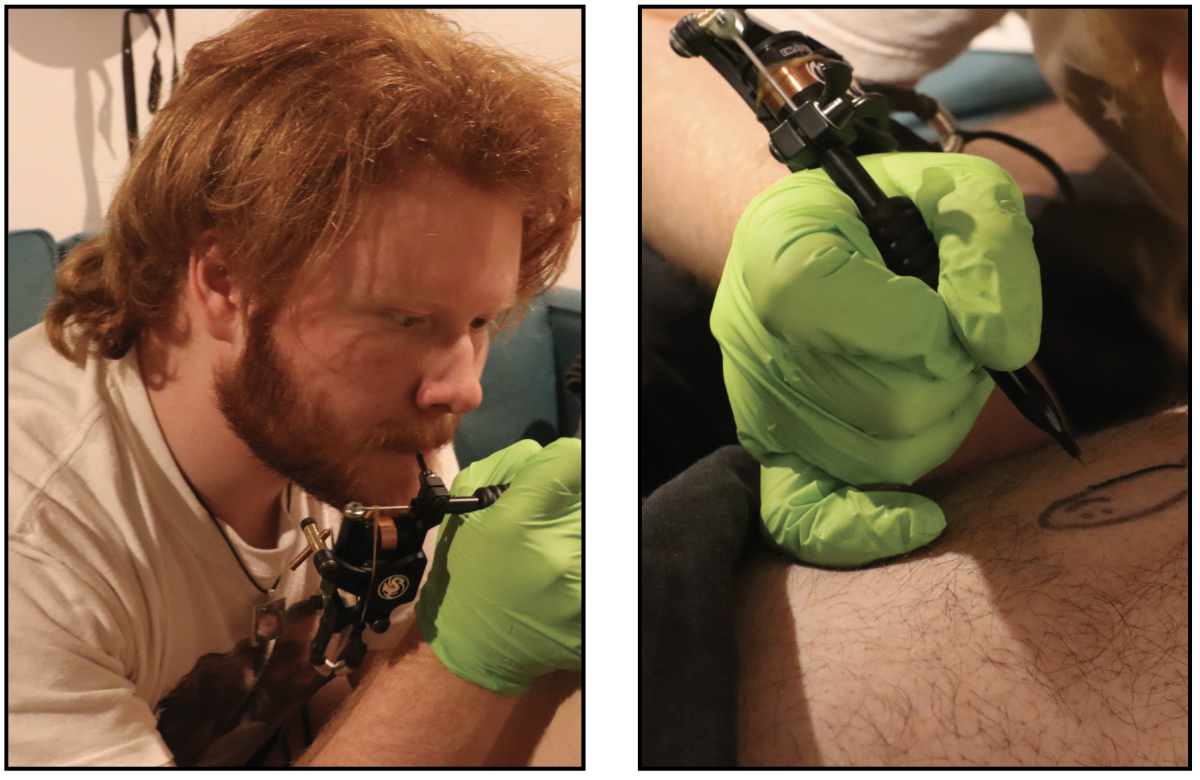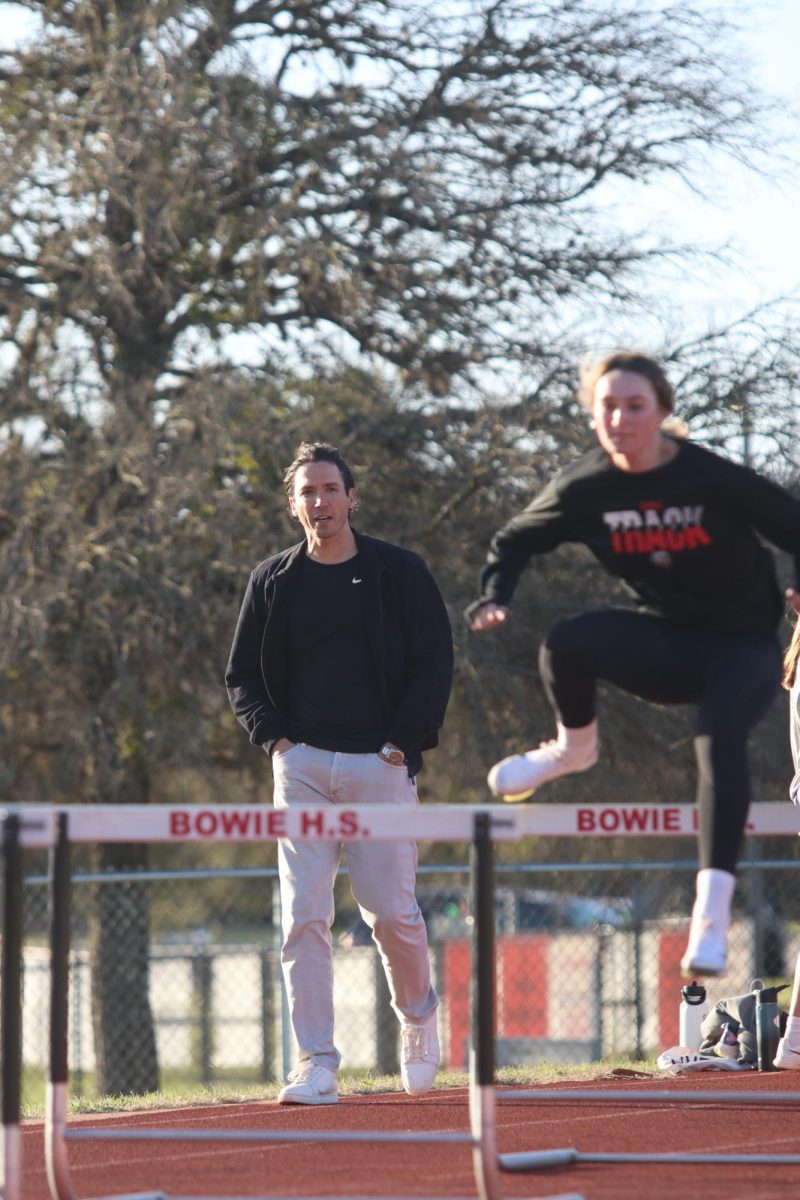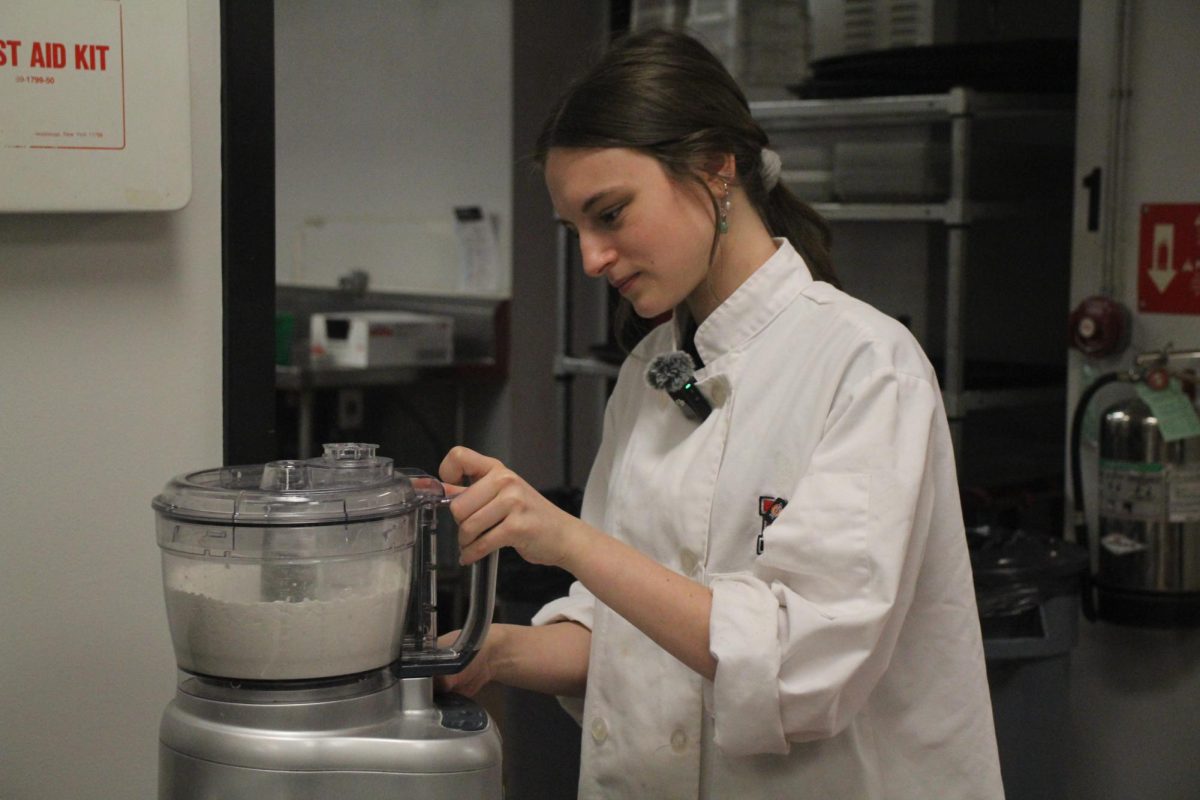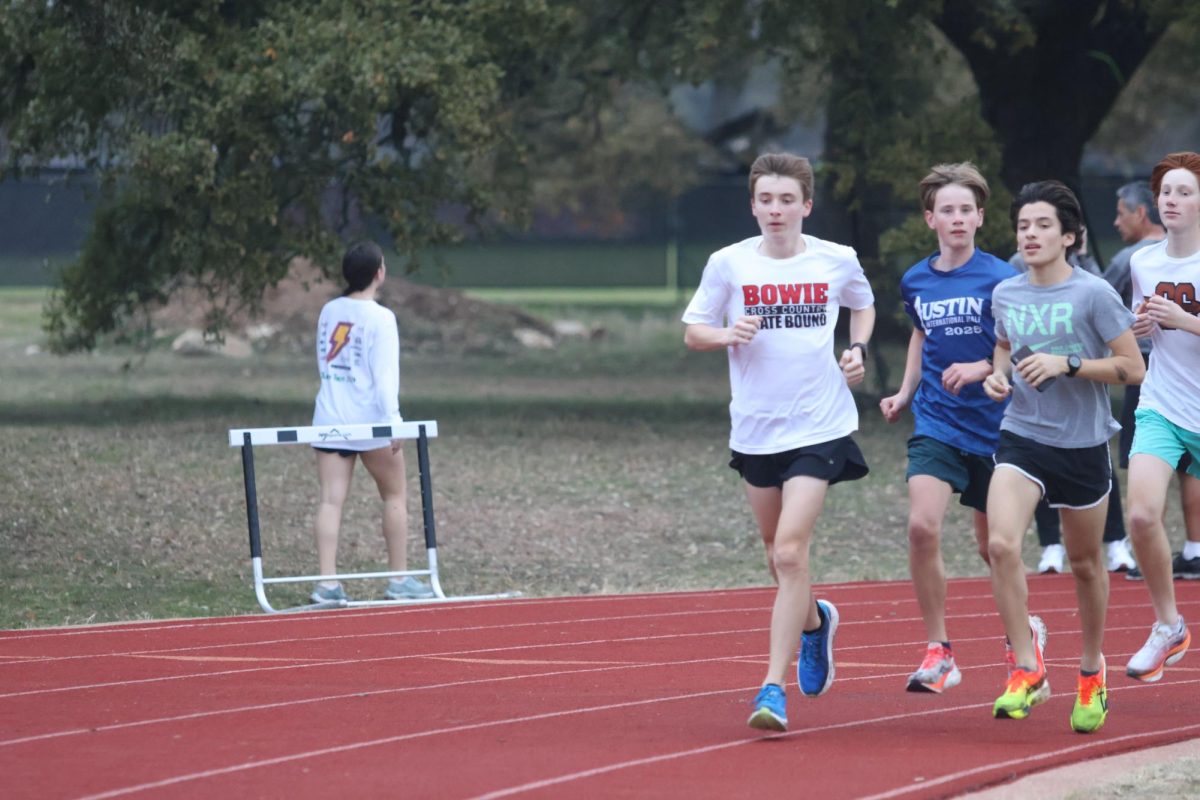As senior Monica Arce moves her stylus, the final line is placed, and as she pushes play to view her final product, a sense of satisfaction washes over her. She has spent hours on her animations and draws inspiration for her work from her cultural background. Arce is among many students at Bowie that wants to pursue a career in animation.
Animation is one of the Career and Technical Education (CTE) pathways at Bowie. Students must take a prerequisite before moving on to animation class where students have more freedom to create personalized projects. Arce is in the highest level of Animation at Bowie, Animation III.
“I think we’re incredibly fortunate to not only have a teacher that’s so legitimately passionate about animation, but also to have access to so many amazing resources,” Arce said. “I’ve known people that go to other schools, and they’re always amazed when they hear that we have anything that you could possibly need in the real industry in this classroom. I’ve also seen a lot of students choosing to do this career just from how fantastic this program is.”
Animation I typically focuses on the basics of the of the craft, but higher levels allow students to explore their own independent projects. This means that students work at their own pace, learning new techniques with the help of their teacher or the internet. On occasion, this freedom can lead to stress for students.
“Sometimes I wish I could just ask someone how to do something and have them give me a lesson plan on how to do that thing,” senior Joopsy Addison said. “Except for Animation I, we don’t really do that. Besides that, most of it’s just figuring it out yourself and it can be difficult, but, overall, this style of learning has more benefits than challenges.”
At Bowie, animation students are instructed by teacher Andrew Nourse, who has been at Bowie for 18 years and has been teaching for even longer. Nourse’s first interaction with making animation was in his last year as a student at University of Texas at Austin. When he graduated, he started teaching animation classes at Austin’s Dougherty Arts Center, eventually transitioning to teaching middle school art full time.
“The best thing is when I see students who spend so much time on their work get recognized for it. They light up,” Nourse said. “When a student’s work gets recognized it’s a priceless moment for me not only as an individual, but also as a teacher. The ultimate goal is to get your work out there and have it be seen.”
Many students want to work for studios such as Dreamworks and Pixar. Though animation continues to be a prominent component of the film industry, in recent years major studios have focused more on 3D animation as opposed to a more traditional 2D style. This leaves students like senior Patt Collings, who primarily does 2D animation, feeling discouraged.
“2D animation is such a laborious animation style and it’s sad having to sacrifice your artistic integrity for what a focus group or a major company thinks,” Collings said. “I think both 2D and 3D are very interesting and beautiful forms of art, but I think the fact that 2D animation is getting shoved to the corner isn’t great. There are still opportunities for 2D animators in that space, but it’s disappointing to see something that you’re really passionate about being undervalued.”
Although students in Animation classes have access to multiple animation mediums such as stop motion and 3D animation, Nourse says 2D animation is one of the most commonly used forms among his students. This leads some students to believe that 2D animation will persevere.
“There is an art program called Procreate and they came out with a 2D animation software that you can use on an iPad,” senior Corey Madden said. “Because you don’t need some massive computer and you can animate anywhere, I think it is going to help 2D start to come back against 3D just because it makes animating more convenient.”
While Nourse agrees that 2D animation will persist, new technology is yielding new challenges for the community. He remembers the panic among animators when 3D animation started to become more prominent in the 90s and can see the lasting impact it has made.
“Back when Pixar emerged, 3D animation started taking over and traditional animators were worried that 2D animation was going out of style, but it hasn’t really,” Nourse said. “Now, Artificial Intelligence is emerging and we’re afraid that it’s going to take away the appreciation of human made art. AI is going to be around for a long time but so will animators, maybe forever.”
One of the most common uses of animation is children’s shows and movies. Due to the number of children’s content that is animated, many in the industry feel that people consider animation more childish than other forms of media.
“Animated movies, even though people perceive them as childish, they’re not,” Addison said. “Studio Ghibli movies, for example, are some of the best movies ever and they recently released The Boy and the Heron. It was one of the most moving movies I’ve ever seen. I was in the theater crying and I don’t cry over movies often. Animation has a lot of power over us.”
In 2023, Linearity found that only about 60% of animators were employed globally. That same year, the New York Times found that 44% of all employees in the United States felt they were going to be laid off by the end of the year. Despite uncertainty in the job market, students continue to pursue animation as a career.
“Animation is one of the most human art forms,” Arce said. “Every frame that you see has been worked on tirelessly and you know someone has poured their life into it. People don’t really go into animation for the money and there’s no guarantee that you’ll do well in this industry. People do it because of the love and the passion they have for the art form.




